12 November 2012
Lateral spread failures from earthquakes in Burma
Posted by Dave Petley
NB: this is a corrected post – it is now clear that the lateral spreading images are from the 2011 Burma earthquake, not the November 2012 event.
There is comparatively little news emerging from Burma (Myanmar) following the earthquake yesterday, but current estimates put the loss of life at about 13 people, although communications with remote communities seem to be rather challenging. The most eye-catching event was the collapse of an under-construction bridge across the Irrawaddy River near Sint Ku, killing four construction workers:
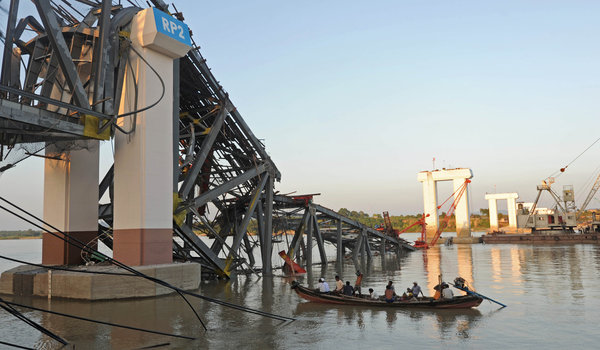
http://www.nytimes.com/2012/11/12/world/asia/deadly-myanmar-quake-destroys-bridge-and-mine.html?_r=0
There is at least some evidence of lateral spread failures during the earthquake. This image, from here, appears to show such a failure:
Previous earthquakes in Burma have shown impressive lateral spreading. This image for example, from an excellent gallery of images available here from the 24th March 2011 event, probably shows a lateral spread failure:
Note the displacement of the white lines, which indicates that the area delineated by the tension crack has displaced laterally to the left. There is another nice example, from a different location, although note that there may also be an element of settlement in the fill under the road here as well:
The behaviour of these lateral spread failures during aftershocks is highly complex, not least because retrogression of the spread can cause existing tension cracks to close. For this reason, it is fair to say that this is not an officially-recommended approach to demonstrating the size of a tension crack:
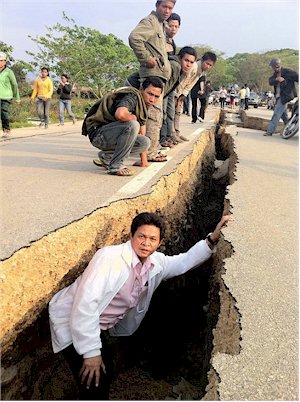
http://earthquake-report.com/2011/03/27/pictures-of-the-devastation-after-the-deadly-earthquake-in-tachileik-myanmar/


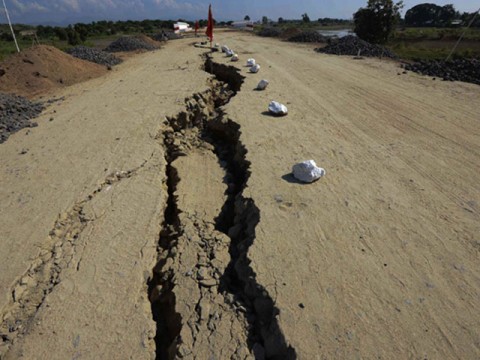
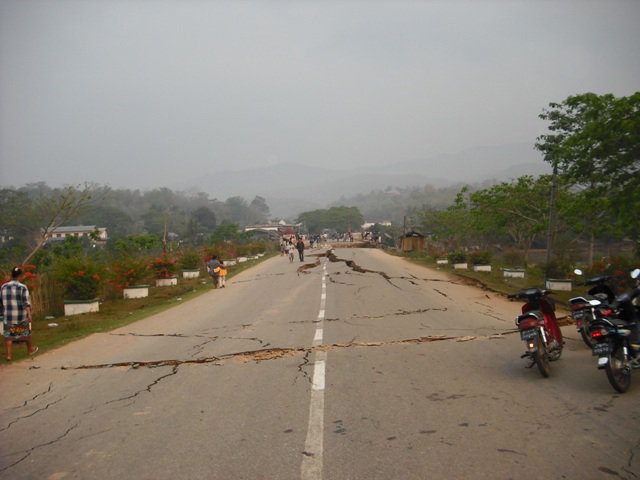
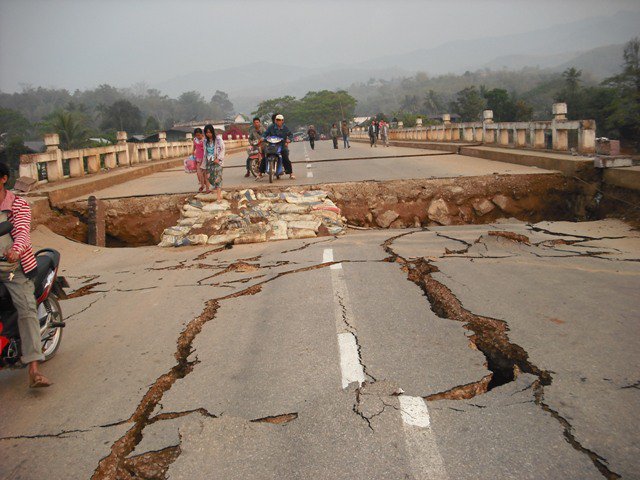
 Dave Petley is the Vice-Chancellor of the University of Hull in the United Kingdom. His blog provides commentary and analysis of landslide events occurring worldwide, including the landslides themselves, latest research, and conferences and meetings.
Dave Petley is the Vice-Chancellor of the University of Hull in the United Kingdom. His blog provides commentary and analysis of landslide events occurring worldwide, including the landslides themselves, latest research, and conferences and meetings.
Just to let you know, the images from “excellent gallery of images available here” is for the 24th March 2011 Burma earthquake. This was spotted by a colleague working on that older event!